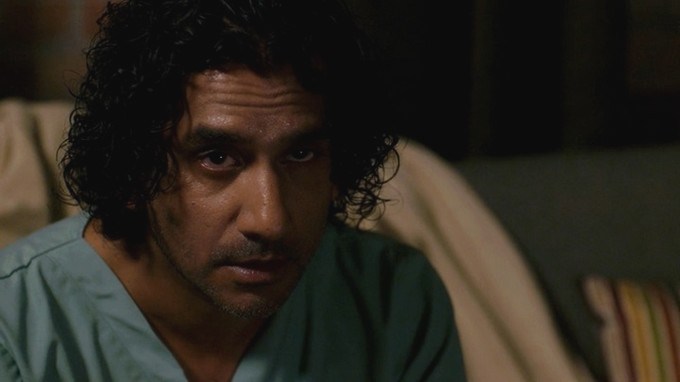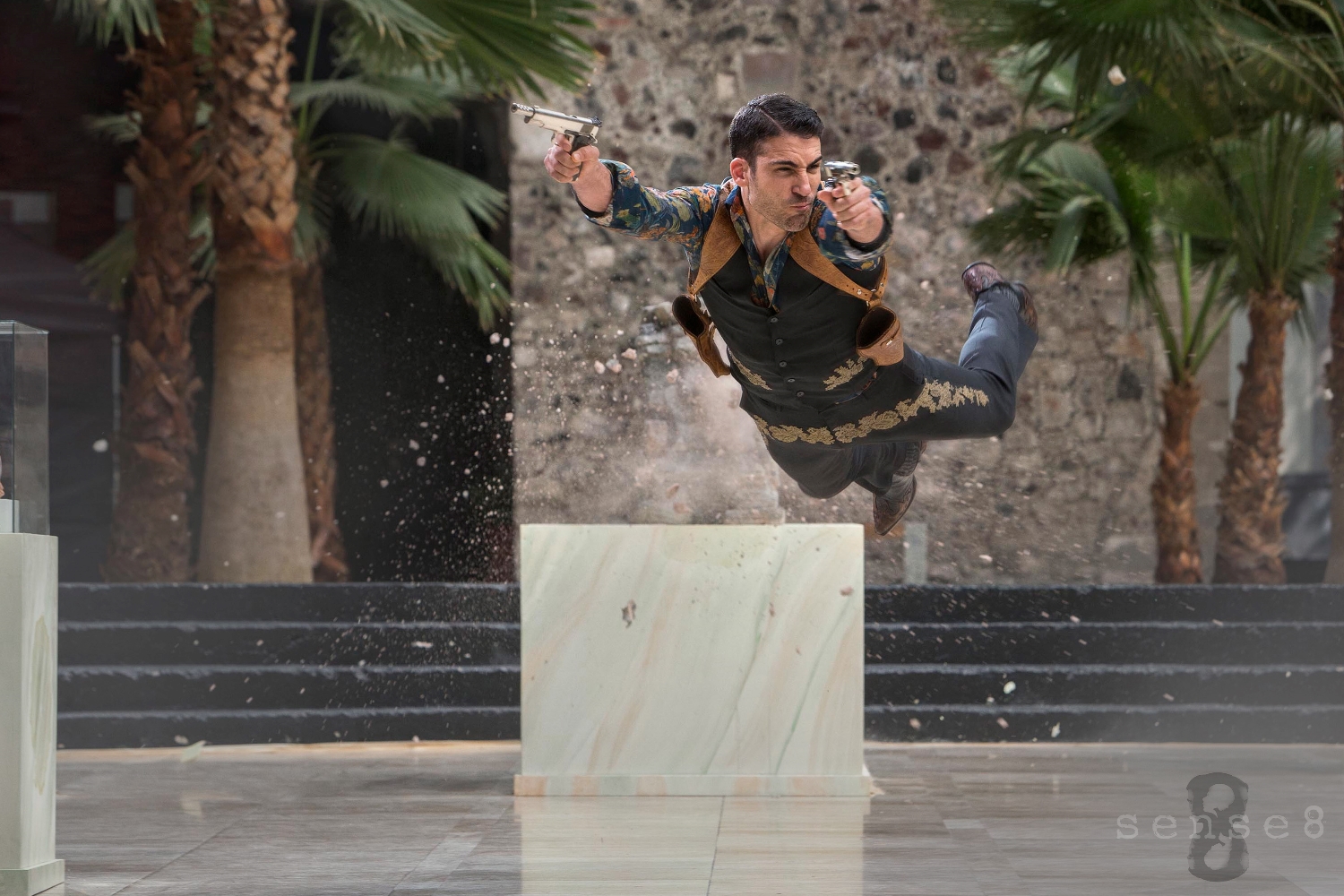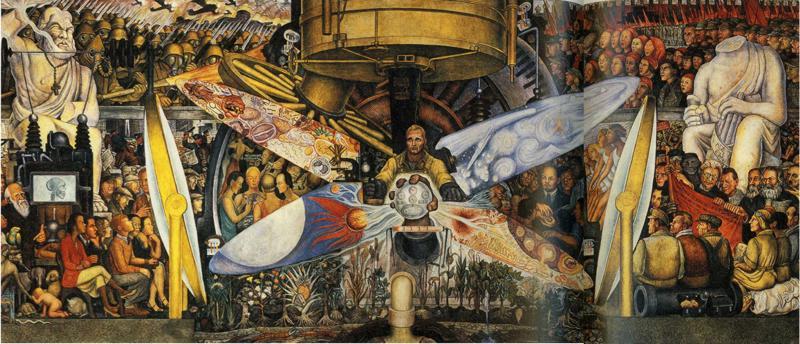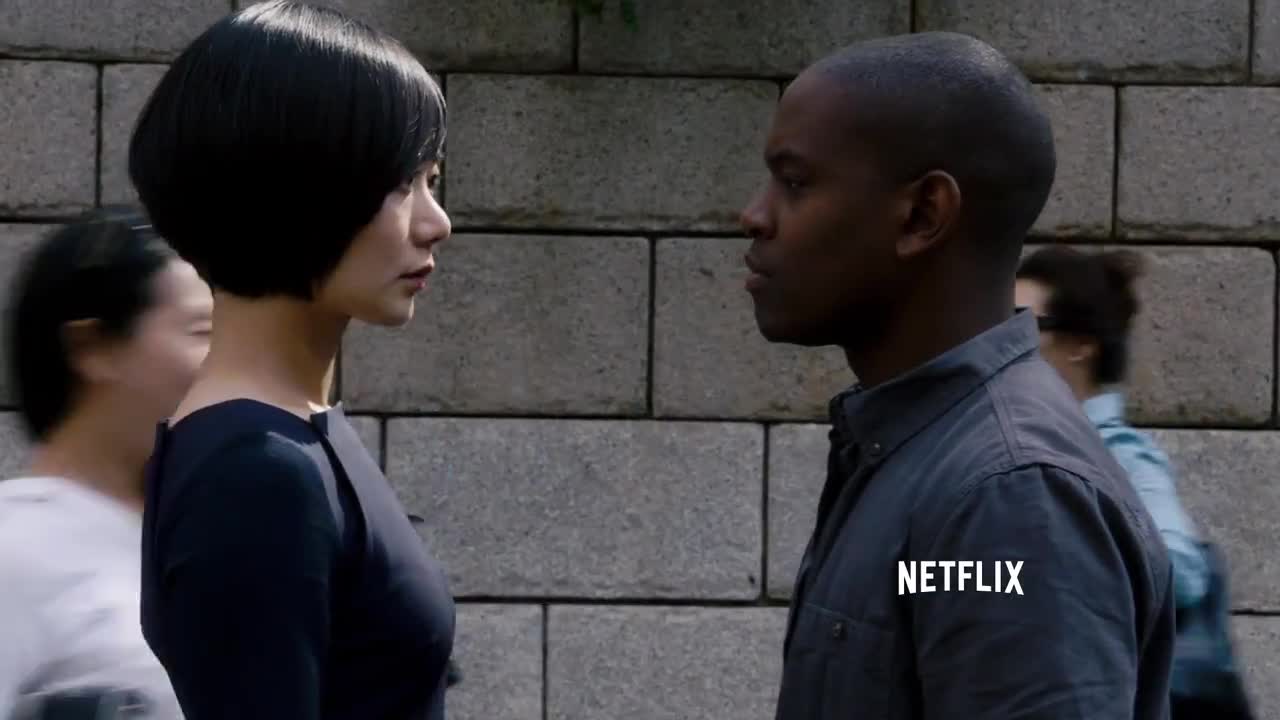Sense8: About the Wachowskis and the Conceit of Plot
(Sense8 comprises 12 episodes, each clocking in at around an hour, all of which debuted on Netflix on June 5)
Sense8 is a difficult show, not because it’s hard to understand, and not because there are six hundred characters. This marketing image, which hit the internet a few weeks before the series’ debut, is why Sense8 is a difficult show. It’s the worst thing they could have said about it, but sadly the best way to get people interested:
That’s Lito. He’s a Mexican movie star whose primary struggle over the course of the season is with his identity as a closeted gay man. The scene above? He’s shooting a movie. It’s the Wachowskis’ most poignant moment of self-awareness as they juxtapose this movie star’s fake shootout with their cop character’s real foot chase through the impoverished streets of Chicago. But the cutting back and forth isn’t just a part of the show. It’s the characters themselves inhabiting each other’s experiences in a way only the sensates can.
Once the shootout is done, the director storms on stage in applause and praise. Lito’s best performance was actually half real. This is a man who lies every day about his sexuality, and his life is constantly falling apart because of it.
Normally, a shootout is a thing that happens in between the parts where characters say important things. That’s how The Matrix worked. In Sense8, the shootout is the thing that’s being said. The Wachowskis have been working towards that their entire careers. Their musicality in the combination of meaning and action has reached harmony. There are breathtaking scenes of various intensity and depth that thrive for the interconnectedness of its primary characters, swapping people in and out of each other’s lives and situations as a way of tying the world into one understandable weave.
What’s the plot in all of this? Well, in the context of the overarching “hunt the sensates” shadow war, it all means absolutely nothing. But it is Sense8, the show. It’s the secret desire of the Wachowskis to forgo plot altogether and just explore the idea that one person can truly know another. Unfortunately, few people would watch episode two if episode one hadn’t created a sense of forward momentum in the expositions of perceived global terrorist and affirmed telepathic Jonas, played with deft ambiguity by Naveen Andrews of Lost fame.
That’s fine and all. There’s a villain. His name is Whispers and his eyeballs are really evil. Don’t look at them. A group of sensates is called a cluster. They can share and visit on a telepathic level within their cluster. That’s fine. It’s all fine. But do they save the day? You’re asking the wrong damn question.
Each of the eight sensates drive through their own, very straightforward tales over the course of the twelve episodes. Plots within plots, straight lines in a double helix, but all of it dropped into a cauldron that doesn’t make a magical conclusion potion. Instead, jump into the cauldron with them, just as they do with each other. It isn’t A to B that makes the show, but A to B plus C to D.
The right question: when they conjoin into one living organism, an amalgamation of eight spirits, skillsets, intelligences and sensitivities, what do they become? Better, in a word. Better than the homo sapiens, for whom “killing is easy, when you can feel nothing,” in the words of a smiling Jonas.

Sense8 is an original science fiction story overlapped onto our real world, fitting exaggeration and phenomenon onto familiar tragedies across the globe – Africa’s marginalization, American crime, business misogyny, transgender discrimination. It’s the most ambitious thing about the project that it isn’t an anime following the exploits of hyper children trying to save the earth from Jupiter demons. There are no trench coats, no super weapons. There isn’t even the conceit of fate, so often a crutch to stories trying to tie their loose ends together. Instead, though our sensates are playing on a field of heightened reality, the general theme of connectedness (and lack of it, elsewhere) strikes close enough to our world that you can imagine how relieving it would be to acquire this sensate gene. How empowering it would be to drop the bullshit.
And so it is, dropping said bullshit, that as many scenes are as devoted to propulsive, action-oriented forwardness as are to quiet, shared contemplation, somehow often as propulsive as the slow-motion kicking and shooting.
Late in the season, Lito is sitting in front of a collection of sketch murals at a museum, a work of Diego Rivera, who would come to paint a version of it for Rockefeller back in the day, called Man at the Crossroads. Rockefeller destroyed Man at the Crossroads for its portrayal of Vladimir Lenin among the working people. In the recreation, Charles Darwin, Karl Marx, a statue of the god Jupiter and a great many other figures conjoin on the common man as all their represented ideals collide to the construction of the human race today. Lenin is there too.
In no way was Lito’s description of the mural even close to as on-the-nose to Sense8 as mine. He was more concerned with the fact that Rockefeller destroyed it, and when it was recreated, it was recreated for Mexico where Rivera thought it would be free. Instead it’s been pimped out at the Bank of Mexico.
“Nothing about it is free,” remarks Hernando, Lito’s boyfriend.
The Wachowskis were imprisoned by The Matrix. They are undoing that prison on Netflix with Sense8, which makes that marketing image all the more tragic. The defining feature of that scene is the clearly visible support wires flinging Lito about the room. Neo always needed those wires to pull his tricks. Lito’s best tricks occur when he finally sheds them.
Forget the movie Wachowskis and embrace the TV show Wachowskis, who don’t give half a crap about plot. They resent it. The final episode wreaks of obligation. The episode before that, when the word “end” still had no meaning, portrayed the births of all eight sensates as they mentally collected from across the globe for an orchestral performance of Beethoven. Why? I don’t know. I was balling my eyes out.
Yeah, but what’s the point? Screw you and screw your point. There’s an artistic intention here, whether you want to buy into it or not, that sets the show distinctly apart from any other written in the name of plot. Our sensates talk with dramatic purpose, not realistic reaction. Capheus, our African sensate, siphons the spirit of Van Damme to fell his foes. That spirit is actually Sun, she of the South Korean business world, who knows martial arts. That way, all of our sensates know martial arts. There’s convenience in it, yes, but also a purpose. Isolation is easy. Isolation is death.
You’d be well-served by accepting that Sense8 only goes in a straight line because, with all the mental swapping and sharing going on, doing it without a central roadmap might’ve driven people into a complete psychological ravine. Jonas and Whispers show up just enough to remind you there’s probably something at the end of the tunnel. But I don’t care about Jonas and Whispers.
Lito was describing Diego Rivera’s mural to another sensate, Nomi, a transgender woman that jumps between mental correction allegories and serving the roadmap as the super hacker. Midway through the season, she’s asking why she wouldn’t have connected with a group of people more similar to her. Wouldn’t that make more sense?
“Maybe that’s the point,” answers a wise old lady, “to be something more than what evolution would define as yourself, you’d need something different from yourself.”
Isn’t that better than a plot?















